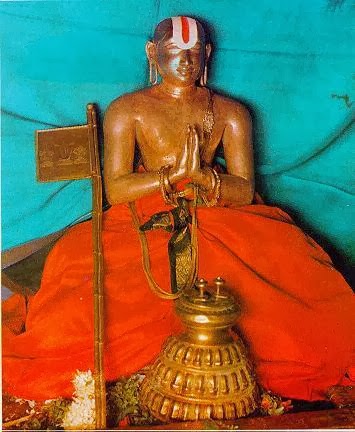Sri Ramanujacharya Life History : 3.

HIS BIRTH::CHITRAI- TIRUVADHIRAI) His date of birth is placed differently by different authorities.As per PPM, he was born in Kaliyuga year 4119 which corresponds to1017 AD. PPM fixes even the exact date as 13th April 1017 AD, interms of English Calendar. PRA, though notes the year as 4118 Kali , maintains the year as 1017 AD only and gives additional information that the Rasi was Karkataka and the time of birth was exactly at noon. VAC, MKS and MSR also agree on the year 1017. PTA gives a few more details like the Yogam being Ayushman, Karanam being Bhadra, Gotra being Harita, Saakha being Yajus, Sutra being Apasthambha and Sect being Vadama ( Vide p.45 of GLE). PPM and ATA mention the year as Pingala, month Chitrai and the constellation Tiruvadirai. PPM adds that it was a Sukla Paksha Panchami, a Friday. It will be for the Research minded scholars to piece together all these details to arrive at the correct date, time etc. Vriddha Padma Purana presages his


